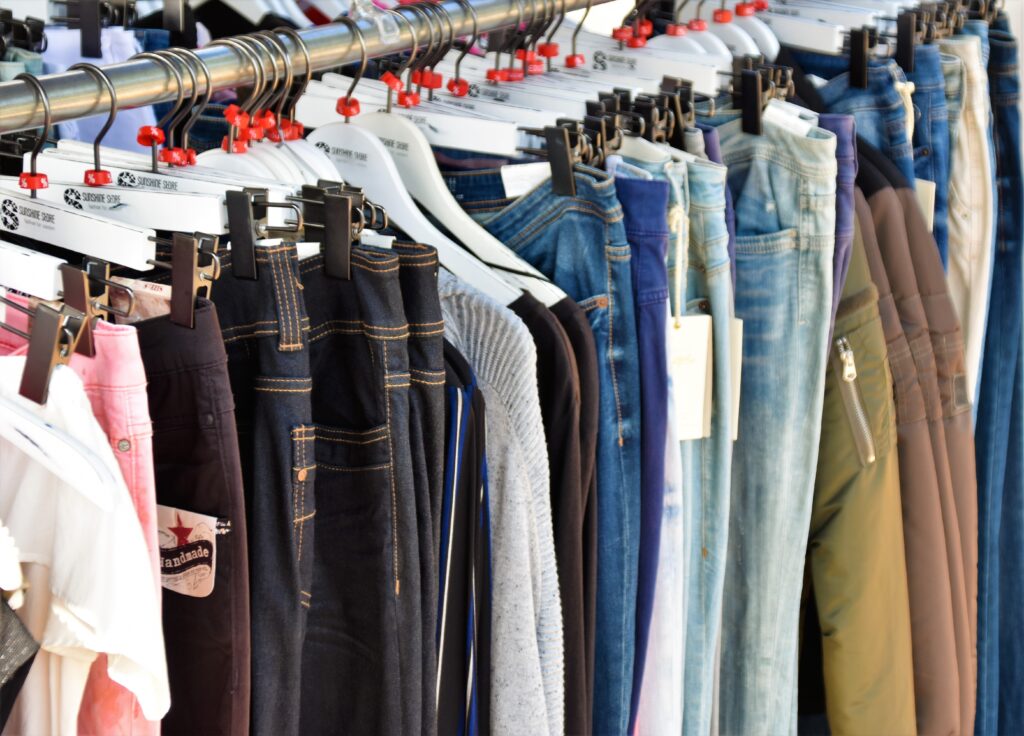As the environmental issues associated with climate change continue to worsen, governments and consumers across the globe are demanding higher standards of sustainability from the business sector. The fashion industry in particular, responsible for as much as 10% of global emissions, has fortunately responded to the call to action. However, adapting their business models has proven to be a complicated task. Thankfully, experts from carbon management platforms like Emitwise have spent years learning how to navigate this new, relatively uncharted territory, and are available to assist industry leaders where they can. In an exclusive interview with Earth.org, co-founder and CEO of Emitwise Mauro Cozzi discusses sustainability in fashion, how fashion companies today can alter their approach to business to increase efficiency, reduce costs, and in the end, achieve a higher standard of sustainability that fits in line with the net-zero agenda for a greener future.
—
In light of the global agenda to fight climate change, an increasing number of companies are opting for a more sustainable approach to the way they handle business. Thankfully, many companies in the fashion industry – a $2.5 trillion-dollar global economic powerhouse, as well as a significant source of pollution – are leading the charge in this sustainability venture.
One of the largest contributors to global emissions, the fashion industry is responsible for as much as 10% of global carbon emissions, producing approximately 92 million tons of textile waste each year. Furthermore, 20% of all industrial wastewater pollution is directly linked to fashion-apparel production, as is 33% of oceanic microplastic pollution, and 31% of oceanic plastic pollution.
You might also like: The 10 Essential Fast Fashion Statistics
As many concerned environmental advocates have attested to, the fashion industry is hardly a bystander when it comes to global pollution. One such advocate by the name of Laura François, a social impact strategist and social entrepreneur behind organisations including Clothing the Loop and Fashion Revolution, once stated: “When you buy into fast fashion, no matter how many times you wash your clothes they will never be truly clean. They’re stained by the sweat of those who made them, and the footprint it leaves on this planet.”
Though Francois’ poignant commentary on fast fashion may resonate strongly not only in the past but especially today, many modern fashion companies are certainly willing to change their pollutive, linear approach to business. However, the logistics behind such an undertaking can be a complicated and daunting task.
This is where carbon management platforms like Emitwise come into play, providing high-end management software solutions to carbon-intensive industries, including construction, food and beverage, manufacturing, and of course, the fashion industry.
“We help [companies] measure their carbon footprint, satisfy any reporting requirements that they have, but most importantly, we actually help them get to net zero.” says Mauro Cozzi, CEO and co-founder of Emitwise.
In an exclusive interview with Earth.Org, Cozzi shared his insights into the field of sustainable fashion, explaining how and why fashion companies today are choosing to take their sustainability standards to the next level.
You might also like: Fast Fashion and Its Environmental Impact
Scope 1, Scope 2, and Scope 3 Emissions: What’s the Difference?
When it comes to sustainability jargon in the business sector, the focus tends to be on what are known as scope 1, scope 2, and scope 3 emissions. As Cozzi explains, the three are defined by the Greenhouse Gas Protocol, a global, standardised framework used by both the public and private sector to measure and manage greenhouse gas emissions.
“At its most basic form, scope 1 means anytime you’re burning some sort of fuel, whether you are heating your home, or you are driving a vehicle that uses petrol,” Cozzi explains.
Scope 1 emissions also cover natural gas and refrigerants, as well as emissions from machines like boilers and furnaces – essentially any pollutants that are released during industrial processes, on-site manufacturing, and the use of fleet vehicles.
In the case of a fashion company, Cozzi states that scope 2 emissions are emitted when a particular company’s stores or factories are using electricity. This can include the powering of lights, air conditioning, factory machines and other necessary industrial equipment; anything and everything that utilises the power grid to produce or sell clothing items.
As for scope 3 emissions, the GHG Protocol defines them as all indirect emissions that are found within the value chain of a reporting company. This includes the raw materials to make the clothes, the process of making the clothes, the shipping of both the materials to the factory and the item to the storefront, and what happens to the clothing after it is discarded in landfill. Some other less obvious scope 3 emissions are associated with business travel, as well as investments into other businesses.
“ [Scope 3 emissions] can be quite a complex world, and tracking all of it can get pretty complicated.” notes Cozzi. “But it’s also worth most of the carbon footprint, so it’s really important.”
Sustainability in Fashion: What Can Companies Do to Be Greener?
Cozzi explains that there are many ways fashion companies can modernise their approach to business, and achieve a higher standard of environmental ethics in their workplaces.
“For fashion companies, it’ll mostly be scope 2. They need to be buying renewable energy for everything that they’re powering.” says Cozzi.
According to a 2019 study, the global textile industry uses as much as one trillion KWh of electricity to power their factories and produce 60 billion kilogrammes of fabric (an amount equivalent to 132 million tons of coal). On the retail level, the average small business store in the US, for example, uses 25,000 KWh per year, and some of the larger fashion companies, like Nike, have as many as 1,000 retail locations across the world. This can amount to as much as 25,000,000 KWh per year required just to keep the stores running.
“Whether it’s their shops or their facilities, they need to invest in renewable energy.”
As for scope 3 emissions, fashion companies generally emit the most emissions when purchasing and shipping raw materials. To mitigate this issue, Cozzi says that shipping by sea instead of air is their best option, as it can reduce emissions by a significant margin.
A report by the Massachusetts Institute of Technology (MIT) found that air freight can be as much as 47 times more polluting than sea freight. This translates to 500 grams of CO2 per metric ton of freight per kilometre of air transportation, in comparison to a mere 10 to 40 grams of CO2 per kilometre of sea transportation. Furthermore, air freight releases polluting emissions at an altitude far more destructive towards the environment; where the atmospheric chemistry can be significantly impacted. Though sea freight has gained a bad rap for occasional mishaps and lower quality of fuel, it is still occurring at sea level; where the influence of aerial pollutants is much less significant.
Using recycled materials instead of raw materials is another surefire way to lower emissions, a method that even the consumer can be involved in. Cozzi notes that fashion companies should be encouraging their customers to engage themselves in the circular economy, a process that would entail taking one’s old garments back to the retailer to be recycled into new garments. In doing so, customers can reduce their carbon footprint while also disincentivising fast-fashion practices.
“When it comes to the circular economy, it is important to remember that the bulk of the carbon footprint of a piece of garment is in its production. It’s in taking raw materials, taking dyes, and then shipping it all over,” says Cozzi.
“The more that you can reduce how many new pieces you need to produce, the lower the footprint of the fashion industry.”
He also touches upon the subject of transparency in the fashion industry, stating that the more transparent a company is, the more sustainable they will end up being. The reason for this is due to the fact that as a company reports their developments, specifically those that are related to the achievement of sustainability targets, investors and shareholders will be able to hold them accountable to those achievements.
“If they miss a report, or if they miss a target, people have the opportunity to ask themselves why it happened,” says Cozzi. “The market has the opportunity to penalise them and to lower their stock price if they disagree with the decision making that led to some of those outcomes.”
Cozzi further clarifies that if companies are more transparent in the future, they will have to adopt transparency standards and follow frameworks (like the Task Force on Climate Related Finances in Europe, for example) that have already been well defined, a process that will further solidify their transparency, and maintain the sustainability agenda within the business sector.
“If a company is reporting their scopes, one, two, and three, in detail, explaining how they calculated it, following frameworks, and being audited on those numbers, then it is already possible to start holding them to account on other more transparent reporting.”
You might also like: 5 Fast-Fashion Brands Called Out for Greenwashing
What Is Sparking A Green Revolution Within the Fashion Industry?
The sustainable fashion industry is currently worth approximately US$7.5 billion. By 2027, it will be worth $11.1 billion, and by 2032 it is projected to get as high as $16.8 billion. The world economy is expected to gain an additional $192 billion as more fast-fashion problems are solved across the globe, as well as 18 million additional jobs by 2030.
As unfortunate as it is to say, most larger industries are stubborn and unwilling to change the status quo in the name of sustainability unless there is a strong reason to do it. So what is causing this surge in sustainable fashion?
“Ultimately, I only hear one or two answers. On the board level, one of them is ‘my investors are demanding this from me’,” says Cozzi.
Cozzi explains that in order to avoid the significant expenses associated with disruptions to supply chains due to climate change, these investors will likely choose companies that are better able to adapt and prevent that risk from happening in the first place.
“Many of these investors are very smart. They have long-term financial modeling which includes the risk of climate change. That risk can be very expensive.”
The second reason fashion companies are taking the sustainability route is because of the consumer. In a study by Nostro, it is reported that 57% of respondents want the fashion industry to focus more on sustainability. However, 61% are concerned about price increases as inflation continues to rear its ugly head. In addition, 55% think sustainable fashion products are too expensive and only a mere 39% said they would pay higher prices for them.
“The interesting thing about consumer pressure is that what the research keeps showing time and time again is that consumers are willing to buy sustainably, but only when it’s the same price. They’re not willing to pay a price premium,” explains Cozzi.
Because of this, Cozzi clarifies that making products sustainably is, as of now, a competitive advantage but not a requirement when considering what the consumer is willing to pay for.
“You are more likely to win business if you are sustainable, but it’s not a must.”
That being said, carbon taxes may force companies to be more sustainable in the future in order to avoid costly fees. With an increase in expenses due to a lack of sustainable practices, the cost of the product will have to increase. In turn, less consumers will be willing to buy their products.
“If you’re not lowering your carbon footprint, your product is becoming more expensive, and therefore consumers won’t show suit,” says Cozzi.
What Can We Expect to See More of in the Future?
As the sustainable fashion market continues to grow in the decades to come, Cozzi speculates that innovators of the future will likely find themselves producing the next big fashion item with an increasingly lower carbon footprint. After all, if there are savings to be made, from both a monetary and an environmental standpoint, then it is only logical to assume that such a sustainability “arms race” will occur in the fashion scene, pumping out new, scientifically elaborate and elegant pieces that are far more environmentally friendly than today’s options.
“I think there will be some really cool new technology around materials in particular, probably synthetic biological materials that we’ve never even thought of, or dreamt up yet, that are extremely low carbon footprint, but high durability, and have all of the properties of the kinds of materials that you need to make clothing,” says Cozzi. “I think there will also be a radically new business model, whether it’s anything from, renting or upcycling clothes, or even wacky things like 3-D printing clothes out of your home.”
And with many of the world’s nations collaborating towards achieving net-zero emissions by 2050, perhaps many of these science fiction-like musings are actually eventual likelihoods, instead of simply being fanciful musings.
“I think if there’s one thing that’s for sure, it is that fast fashion and its current form will not continue to exist,” concludes Cozzi. “If you actually assume we get to zero by 2050, everything will look so radically different.”
Featured image by Waldemar on Unsplash
If you want to learn more about sustainability in fashion, check this out next: 18 Sustainable Fashion Brands to Support in 2023


















